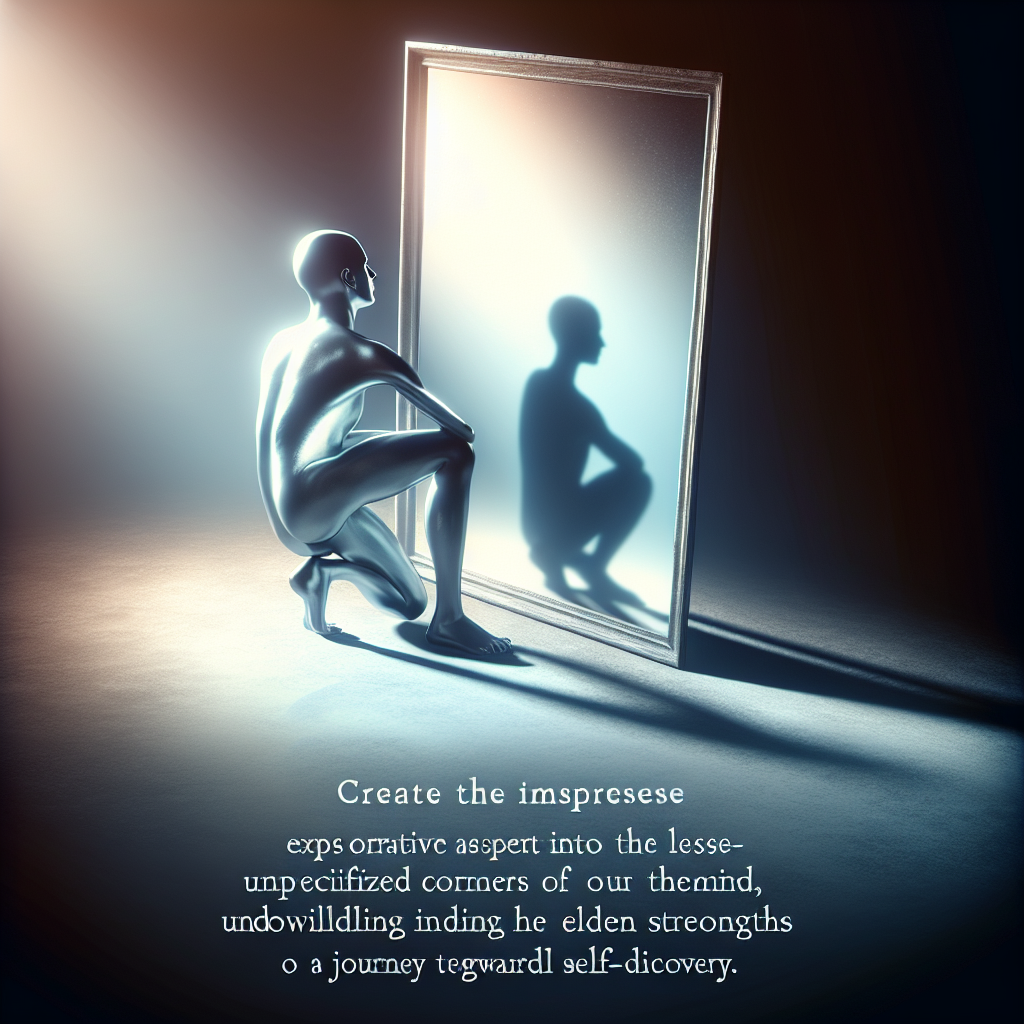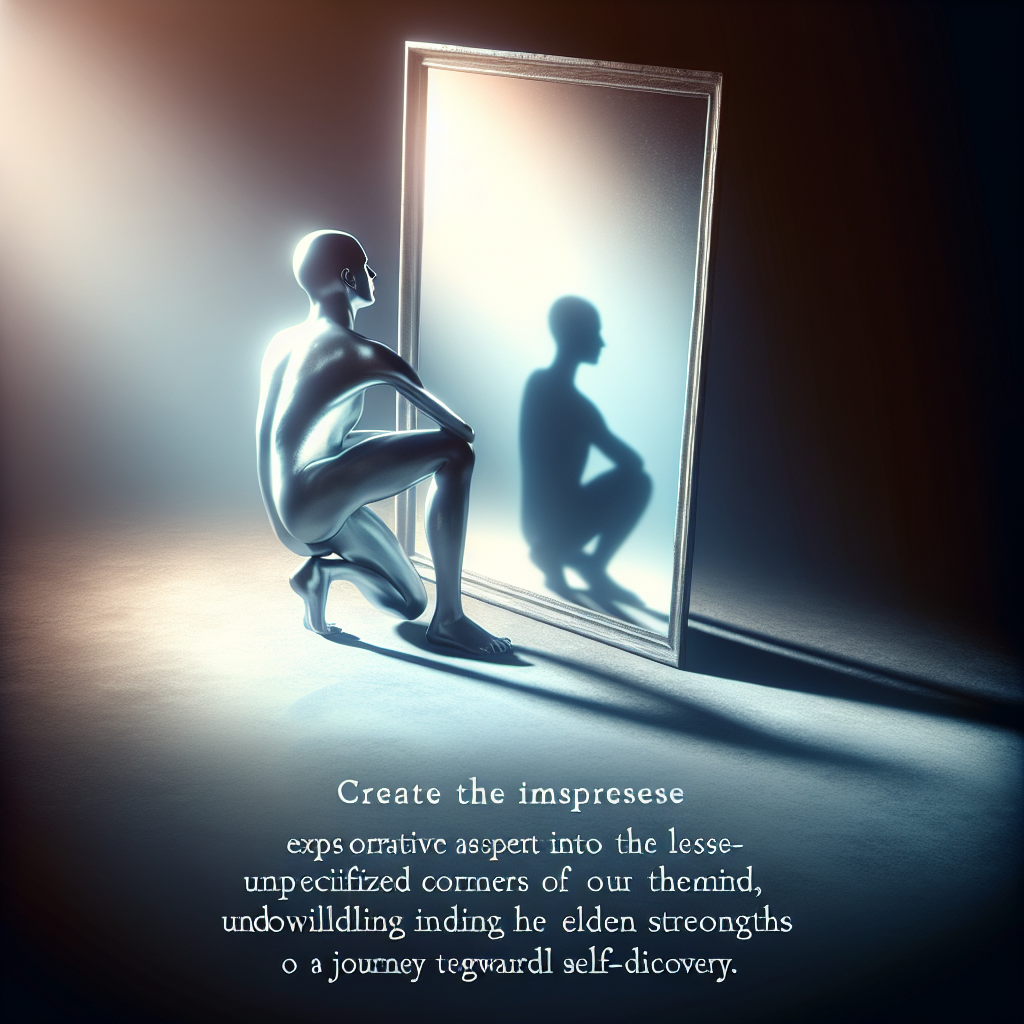Whether you’re feeling stuck, lost, or just curious about digging deeper into your psyche, exploring your shadow self can be a powerful journey towards self-discovery. Embracing the aspects of yourself that you tend to hide or deny can lead to a greater understanding of who you truly are and help you unlock your potential. In this article, we’ve compiled 15 thought-provoking shadow work prompts that will guide you on this transformative path, allowing you to uncover the layers of your true self and embrace the power within.

Exploring the Concept of Shadow Work
Understanding the Self
Understanding oneself is a pivotal aspect of personal growth and development. It involves delving deep into the layers of our psyche and uncovering the hidden aspects of our personality. Shadow work is an introspective practice that allows us to explore these hidden parts, known as the shadow, and bring them into the light. By embracing and integrating our shadows, we can achieve a greater sense of wholeness and authenticity, leading to a more fulfilling and empowered life.
What is Shadow Work?
Shadow work is the process of self-exploration and self-discovery. It involves consciously examining the parts of ourselves that we have suppressed, ignored, or rejected. These aspects, often rooted in childhood experiences, beliefs, and repressed emotions, can have a profound impact on our well-being and behavior. Shadow work helps us to uncover these hidden shadows, understand their origin and purpose, and ultimately transmute them with love and compassion.
Benefits of Shadow Work
Engaging in shadow work can bring forth a multitude of benefits. By addressing and integrating our shadows, we can experience personal growth, increased self-awareness, and emotional healing. It allows us to take ownership of all aspects of ourselves, leading to a greater sense of balance and harmony. Shadow work also empowers us to break free from self-sabotaging patterns, enhance our relationships, and rediscover our authentic selves. Through this transformative process, we pave the way for profound healing and growth.
Preparing for Shadow Work
Before embarking on the journey of shadow work, it is essential to create a safe and supportive environment. This space should be free from distractions and allow for an uninterrupted exploration of the self. Find a place where you can feel at ease and comfortable, whether it’s a cozy corner in your home or a peaceful retreat in nature. Surround yourself with objects and elements that promote a sense of tranquility and security. Creating such a safe space will encourage vulnerability and open-mindedness during the process.
In addition to establishing a safe space, setting clear intentions is crucial in shadow work. Ask yourself what you hope to achieve through this practice. Do you seek emotional healing, self-discovery, or personal growth? By clarifying your intentions, you set a solid foundation for your journey and guide your focus and energy towards the desired outcomes. Intentions act as a compass, helping you navigate through the depths of your psyche and stay aligned with your transformational goals.
Gaining inner stability is another essential aspect of preparing for shadow work. Engaging in practices such as mindfulness, meditation, or breathwork can help develop a sense of groundedness and presence. These practices cultivate inner stability, allowing you to approach the challenges and emotions that may arise during shadow work with a centered and compassionate mindset. By fostering inner stability, you create a solid foundation for exploring the depths of your being.

Prompts for Self-Reflection
Self-reflection is a fundamental component of shadow work. It involves probing deep within oneself and asking thought-provoking questions that encourage exploration and self-awareness. Here are some prompts to assist you in your self-reflection process:
Questioning Your Core Beliefs
Take a moment to examine your core beliefs and values. Are there any beliefs that you hold onto rigidly? How do these beliefs shape your behavior and interactions with others? Reflect on whether these beliefs serve your highest good or if they may be holding you back.
Exploring Childhood Experiences
Our childhood experiences often shape our personality and belief systems. Take a trip down memory lane and reflect on significant events or dynamics from your childhood. How have these experiences influenced your current patterns and behaviors? Are there any unresolved emotions that need attention and healing?
Identifying Trigger Points
We all have certain trigger points that evoke strong emotional reactions. Take note of situations or circumstances that consistently elicit intense feelings within you. Explore why these trigger points hold such power over your emotions and behaviors. Understanding these triggers allows you to navigate them with grace and awareness.
Uncovering Repressed Emotions
Throughout our lives, we may unconsciously suppress or repress certain emotions. Take time to explore emotions that you may have buried or ignored. What emotions do you struggle to express or acknowledge? By uncovering and allowing these repressed emotions to surface, we give ourselves the opportunity for healing and emotional release.
Examining Relationships and Interactions
Our relationships and interactions provide a fruitful ground for shadow work. By closely examining our interpersonal dynamics, we can gain valuable insights into our shadows. Here are some aspects to explore:
Analyzing Patterns in Relationships
Take a step back and observe any recurring patterns in your relationships. Do you find yourself attracting similar types of people or engaging in repetitive relationship dynamics? Reflect on the possible shadow aspects that influence these patterns and how they may impact your connections with others.
Identifying Projection and Projection
Projection occurs when we project our own unconscious aspects onto others. Are there qualities in others that you strongly admire or dislike? Explore whether these qualities may be aspects of your own shadow. Similarly, examine if others frequently project their shadows onto you. Becoming aware of projection helps us recognize and integrate our hidden aspects.
Examining Power Dynamics
Power dynamics play a significant role in our relationships. Consider the power dynamics at play in your relationships – whether they are balanced, imbalanced, or constantly shifting. Reflect on how these dynamics reflect your shadows and how they impact your connection with others.
Exploring Communication Issues
Communication is a vital aspect of relationships. Take a closer look at any communication issues you encounter. Are there patterns of miscommunication, avoidance, or passive-aggressiveness? Reflect on how these communication issues may be tied to your own shadows and explore ways to improve and heal these aspects of your relationships.

Addressing Shadow Aspects
Once you have identified your shadows, it is essential to address and work with them. Here are some strategies for addressing shadow aspects:
Acknowledging Shadow Traits and Shadows
The first step in addressing shadow aspects is acknowledging their existence. Recognize and accept the shadow traits and shadows within yourself. Understand that these aspects are not inherently negative, but rather a part of your wholeness as a human being. By acknowledging them, you create space for healing and growth.
Understanding the Origin and Purpose of Shadows
Explore the origin and purpose of your shadows. Reflect on the experiences and beliefs that contributed to the development of these shadows. By understanding their origin, you can gain insights into why they exist and how they have shaped your life. Understanding their purpose allows you to approach them with compassion and intention.
Transmuting Shadows with Compassion
Transmutation involves consciously working with your shadows to transform them. Cultivate compassion towards your shadows, recognizing that they are a part of your human experience. Practice self-acceptance, forgiveness, and love as you navigate through the process of transmuting your shadows. This compassionate approach facilitates healing and growth.
Embracing and Integrating Your Shadows
The final step in addressing shadow aspects is embracing and integrating them into your being. Embrace your shadows as valuable lessons and catalysts for personal growth. Integrate them by consciously embodying the qualities and gifts they hold. By accepting and integrating your shadows, you cultivate a sense of wholeness and authenticity.
Unveiling Unconscious Behavior
Unconscious behavior is deeply ingrained in our lives, often dictating our actions without our conscious awareness. Here are some aspects to consider when unveiling unconscious behavior:
Recognizing Self-Sabotaging Patterns
Self-sabotaging patterns are behaviors that hinder your personal growth and well-being. Reflect on any patterns that consistently undermine your progress and success. Why do you engage in these self-sabotaging behaviors? Uncover the unconscious motives behind them and seek ways to break free from these destructive patterns.
Analyzing Unconscious Motives
Many of our actions are motivated by unconscious desires and fears. Take time to analyze the motives behind your behaviors and decisions. What hidden desires or fears might be driving your actions? By bringing these unconscious motives to light, you can consciously choose which behaviors align with your authentic self.
Bringing Awareness to Unhelpful Habits
Unhelpful habits often operate on autopilot, hindering personal growth and well-being. Bring awareness to any habits that may be holding you back from reaching your full potential. Reflect on the purpose these habits serve and explore healthier alternatives that align with your personal goals.
Investigating Fear-based Reactions
Fear-based reactions are a common manifestation of unconscious behavior. When faced with challenging circumstances, we may respond instinctively out of fear or self-preservation. Investigate the root causes of your fear-based reactions and consider whether these reactions are genuinely serving you or if alternative responses would be more beneficial.

Healing and Growth
Shadow work is a transformative journey that leads to profound healing and growth. Here are some strategies to facilitate healing and foster personal growth:
Developing Self-Compassion
Self-compassion is crucial throughout the shadow work process. Treat yourself with kindness, understanding, and forgiveness as you navigate your shadows. Embrace the imperfections and mistakes as opportunities for growth, and extend the same compassion to yourself that you would to a dear friend.
Cultivating Forgiveness
Forgiveness is a powerful tool for healing and releasing emotional baggage. Forgive yourself for past mistakes and shortcomings. Practice forgiveness towards those who may have contributed to your shadows. By cultivating forgiveness, you free yourself from the burdens of the past, allowing for profound healing and growth.
Practicing Self-Love
Self-love is an integral part of the healing and growth process. Nurture and care for yourself on all levels – physically, emotionally, mentally, and spiritually. Engage in activities that bring you joy and fulfillment. Develop rituals and routines that foster a sense of self-love. By practicing self-love, you create an environment conducive to transformation and growth.
Rediscovering Authenticity
Embracing shadow work leads to a rediscovery of your authentic self. Explore the qualities and passions that make you unique and align with your true essence. Embrace what brings you joy and fulfillment. By rediscovering authenticity, you reclaim your personal power and pave the way for a more fulfilling and purposeful life.
Harnessing Creativity and Expressiveness
Creativity and expressiveness are powerful tools for self-discovery and healing. Here are some ways to harness them during shadow work:
Using Art and Journaling for Self-Discovery
Art and journaling allow for creative expression and self-reflection. Engage in art forms such as painting, drawing, or collage to explore your emotions and subconscious mind. Use journaling as a means to reflect on your experiences and delve deeper into your thoughts and feelings. These creative outlets provide a safe space for exploration and self-discovery.
Engaging in Shadow Work through Writing
Writing is an effective means of exploring your shadows and bringing them into conscious awareness. Engage in writing exercises that focus on your shadows, such as writing letters to your shadows or keeping a shadow journal. Written words often have a way of unraveling deep-seated emotions and facilitating healing and growth.
Expressing Emotions through Music or Dance
Music and dance are powerful mediums for emotional expression. Use music to evoke emotions and explore them through dance or movement. Allow yourself to freely express the range of emotions that arise during your shadow work journey. Engaging in these art forms facilitates emotional release and encourages a deeper connection with your inner self.

Incorporating Rituals and Practices
Incorporating rituals and practices into your shadow work journey can deepen your connection with yourself and facilitate transformation. Here are some practices to consider:
Meditation and Mindfulness
Meditation and mindfulness allow you to cultivate present-moment awareness and observe your thoughts and emotions. Incorporate regular meditation and mindfulness practices into your daily routine to develop a deeper understanding of your shadows and cultivate a centered and compassionate mindset.
Visualization and Guided Imagery
Visualization and guided imagery are powerful tools for exploring the depths of your psyche. Engage in visualizations or guided imagery exercises specifically designed for shadow work. These practices allow you to tap into your imagination and access deeper layers of your subconscious mind.
Energy Healing and Bodywork
Energy healing modalities, such as Reiki or acupuncture, can facilitate the release and transmutation of shadow energies. Incorporate energy healing and bodywork into your shadow work practices to harmonize and balance your energy system. These modalities can assist in the healing and integration of your shadows.
Dream Analysis and Interpretation
Dreams often provide valuable insights into our subconscious mind. Keep a dream journal and explore the symbols, emotions, and themes present in your dreams. Engage in dream analysis and interpretation to uncover hidden aspects of yourself and gain additional clarity and understanding for your shadow work journey.
Embracing Self-Reflection as a Lifelong Journey
Shadow work is not a once-off process but rather a lifelong journey of self-reflection and growth. Here are some considerations for embracing self-reflection as a continuous practice:
Continuing the Practice of Shadow Work
Shadow work is an ongoing process that requires dedication and commitment. Continue to explore your shadows and engage in self-reflection regularly, even after addressing significant aspects of your shadow. Embrace shadow work as a lifelong practice and maintain an attitude of curiosity and self-discovery.
Integrating Personal Growth into Daily Life
The insights and lessons gained from shadow work should be integrated into your daily life. Apply the knowledge and self-awareness you acquire to your thoughts, actions, and relationships. Cultivate a conscious mindset and continuously strive for personal growth in all areas of your life.
Maintaining a Balanced Inner Exploration
While shadow work is a transformative process, it is essential to maintain a balanced approach to inner exploration. Ensure that you also nurture and celebrate your strengths and positive aspects. Embrace the light and dark aspects of yourself, acknowledging the interconnectedness of both. By maintaining balance and harmony, you can navigate your shadow work journey with grace and resilience.
In conclusion, shadow work is a profound and transformative practice that allows us to explore the depths of our being. By understanding and integrating our shadows, we can embark on a journey of healing, growth, and self-discovery. Through self-reflection, addressing shadow aspects, unveiling unconscious behaviors, and embracing self-love, we can cultivate wholeness and authenticity. By harnessing creativity, incorporating rituals and practices, and embracing self-reflection as a lifelong journey, we pave the way for profound healing and personal growth. Embrace the concept of shadow work and embark on a transformative journey of self-exploration and empowerment.








